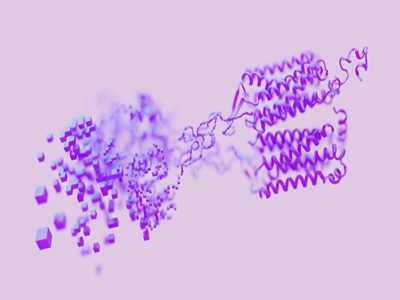Two-Component Co-Assembling Two-Dimensional Protein Structures
This technology involves the creation of two-dimensional protein structures using two distinct polypeptides that form rigid interfaces, offering enhanced control and functionality.

What is the Problem?
Genetically programmable materials that spontaneously co-assemble into ordered structures following the mixture of two or more components are significantly more controllable than those forming from a single component. They allow for precise control over the onset of assembly in ambient conditions, making the system suitable for a wide range of applications. Current methods for creating two-dimensional protein structures often rely on single-component systems, which can limit functionality and control over assembly dynamics. These limitations hinder the development of advanced materials that require precise structural and functional properties for applications in biotechnology, medicine, and materials science.
What is the Solution?
The innovation introduces a computational method for designing and assembling two-dimensional protein structures using two different polypeptides. These polypeptides form homo-oligomers and interact to create a rigid interface, resulting in stable and functional 2D arrays. The components are soluble at high concentrations but assemble into nearly crystalline structures at lower concentrations, both in vitro and on cell membranes. This approach allows for greater control over the assembly process and the ability to incorporate complex functionalities. The designed binary protein arrays can be functionalized and reconfigured, enabling their use in various applications, such as modulating cell responses and creating synthetic biological systems.
What is the Competitive Advantage?
-Enhanced Control: The use of two distinct polypeptides allows for precise control over the assembly process, leading to more stable and functional structures.
-Functional Versatility: The ability to functionalize and reconfigure the protein arrays enables a wide range of applications, from synthetic biology to materials science.
-Scalability: The designed arrays can be assembled at nanomolar concentrations, making the process efficient and scalable for industrial applications.
-Biological Compatibility: The protein structures can be used in living cells, offering potential therapeutic applications by modulating cell responses and extending receptor engagement.
-Stability and Tunability: These structures are stable under various conditions and can be tuned to suppress or enhance specific cellular processes, such as endocytosis.
Patent Information:
-
expand_more mode_edit Authors (1)David Baker
-
expand_more library_books References (1)
- Ben-Sasson, A. J., Watson, J. L., Sheffler, W., Johnson, M. C., Bittleston, A., Somasundaram, L., Decarreau, J., Jiao, F., Chen, J., Mela, I., Drabek, A. A., Jarrett, S. M., Blacklow, S. C., Kaminski, C. F., Hura, G. L., De Yoreo, J. J., Kollman, J. M., Ruohola-Baker, H., Derivery, E., Baker, D. (2021), Design of biologically active binary protein 2D materials, Nature, 589, 468-473
-
expand_more cloud_download Supporting documents (0)